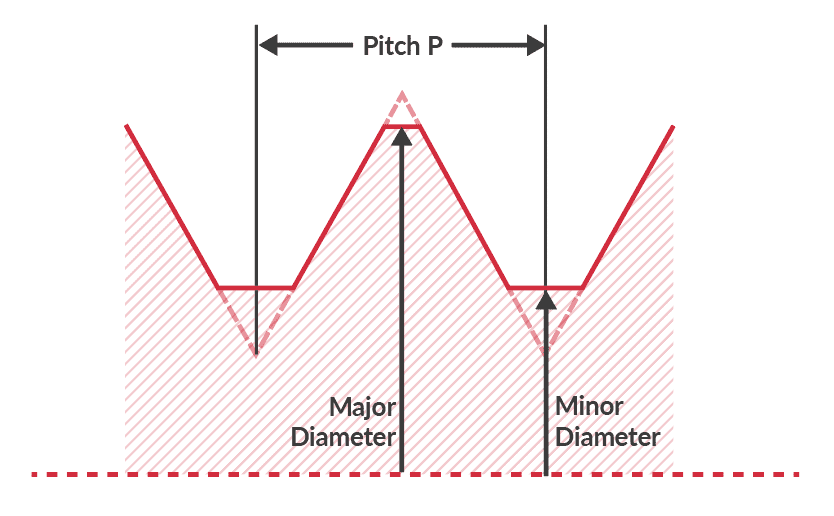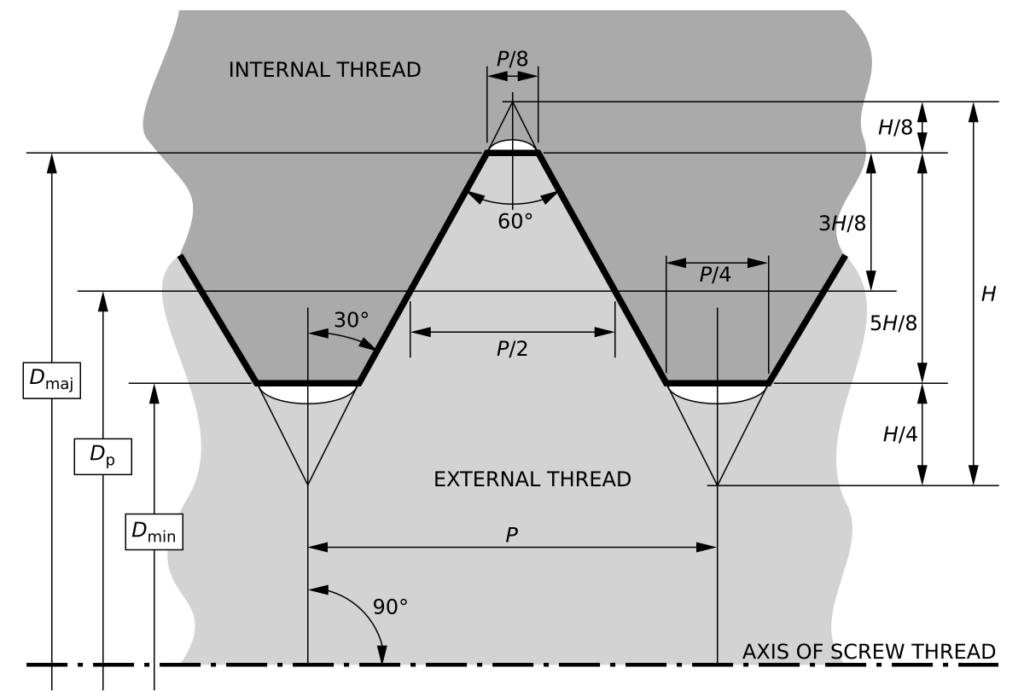1. Introduction
Imperial vs. Metric Threads stand at the very heart of global manufacturing, engineering, and mechanical design. If you’ve ever worked on a piece of machinery, tinkered with a vehicle, or simply tried to fix a loose bolt at home, you’ve likely dealt with one of these two thread systems—whether knowingly or not. But how did these systems come to be? Why do we still use both? And which system is “better,” if there is such a thing?
This comprehensive blog post aims to unravel the longstanding debate over Imperial vs. Metric Threads. We’ll explore their historical roots, spotlight their differences, dive into the mechanical aspects that set them apart, and highlight the industries that rely on them every single day. By the time you’ve finished reading, you’ll have a thorough understanding of why these threads matter and how MBPIndia.com can help you choose the right threads for any project.
2. Historical Beginnings
2.1 The Roots of the Imperial Thread System
The Imperial thread system traces its lineage back to 19th-century Britain—a time of rapid industrial expansion known as the Industrial Revolution. At the epicenter of this revolution was Sir Joseph Whitworth, a British engineer who developed the first standardized thread form in 1841, commonly referred to as the Whitworth thread. Prior to Whitworth’s efforts, manufacturers used a variety of thread forms and pitches, leading to chaos in machine assembly and maintenance. Imagine trying to fix a machine only to discover that the replacement screws or bolts you had on hand were incompatible because each manufacturer had its own standard.
Whitworth’s standardized thread form solved this problem by setting consistent thread angles and pitches. Over time, his system evolved into the British Standard Whitworth (BSW), British Standard Fine (BSF), and other derivatives. This was a pivotal moment in industrial history, as it not only streamlined manufacturing processes but also set the stage for further standardization across the British Empire—hence the term “Imperial.”
In the United States, a parallel development took place. American engineers recognized the need for standardization as well, leading to the Unified Thread Standard (UTS), which was a collaboration between the U.S., Canada, and the U.K. Over time, this standardization gave birth to various threads like the National Coarse (NC), National Fine (NF), and eventually UNC (Unified Coarse) and UNF (Unified Fine). Despite differences in naming, the underlying purpose was the same: ensuring interchangeable parts and bolstering industrial efficiency.
2.2 The Emergence of the Metric System
While Britain and North America refined their Imperial-based systems, Continental Europe took a different approach. Influenced by the wave of scientific enlightenment and a push for rationalization, France spearheaded the development of the metric system in the late 18th century. It was formally adopted in 1795, and by the mid-19th century, the metric system began to spread throughout Europe.
As industry boomed on the continent, it became evident that a standardized system was essential for trade and engineering consistency. The International System of Units (SI) eventually crystallized these metric standards. In terms of threads, the fundamental difference from Imperial was that pitches were measured in millimeters rather than threads per inch. Over time, the ISO Metric Thread became the leading standard for most European nations—and eventually many countries around the globe—as the metric system expanded its influence.
3. Key Differences Between Imperial and Metric Threads
3.1 Units of Measurement
At the core, the biggest difference between Imperial vs. Metric Threads lies in the units of measurement:
- Imperial Threads: Measured in inches. Thread pitch is often given in threads per inch (TPI).
- Metric Threads: Measured in millimeters. Thread pitch is given as the distance between threads, expressed in millimeters.

Because of these differing measurement units, it’s usually impossible to directly substitute a metric bolt for an Imperial bolt (or vice versa) even if they appear somewhat similar in size.
3.2 Thread Form and Angles
- Whitworth (Imperial): Features a 55° thread angle.
- Unified (Imperial): Typically uses a 60° thread angle.
- Metric (ISO): Also uses a 60° thread angle but uses millimeters for pitch and diameter specifications.

Though the angle for Unified and Metric threads is the same, subtle differences in design and pitch measurement still make them non-interchangeable in most cases.
3.3 Pitch Definition
- Imperial System: The pitch is defined by the number of threads in one inch (TPI). A 20 TPI bolt has 20 threads in a single inch of length.
- Metric System: The pitch is defined by the distance between the crests of two adjacent threads in millimeters. For instance, an M10x1.5 bolt means a 10 mm bolt diameter with a 1.5 mm pitch.

3.4 Common Standards and Variations
- Imperial Thread Types: UNC (Coarse), UNF (Fine), UNEF (Extra Fine), BSW (British Standard Whitworth), BSF (British Standard Fine).
- Metric Thread Types: Coarse pitch (e.g., M10x1.5) is standard, Fine pitch (e.g., M10x1.25) is for specialized applications, and Extra Fine is rarer still.
Despite standardization, numerous sub-standards exist for specialized industries like aerospace, automotive, and heavy machinery, which often demand tighter tolerances or unique materials.
4. Mechanical Insights: Comparing Imperial and Metric Threading
4.1 Tolerance and Fit
In manufacturing, tolerance represents the permissible deviation in dimension that ensures a part still functions correctly. Both Imperial and Metric threads have specific tolerance classes:
- Imperial: Defined by classes like 1A, 2A, 3A (for bolts) and 1B, 2B, 3B (for nuts).
- Metric: Defined by classes like 6g/6H or 6e/6H.
The difference is a matter of unit measurement and labeling. For many engineers, the functional outcome is similar: a tighter tolerance means a more precise fit, usually at a higher production cost.
4.2 Strength Considerations
When it comes to raw strength, thread design, material, and manufacturing quality play bigger roles than whether a thread is Imperial or Metric. Yet, certain mechanical nuances exist:
- Threads per Inch (TPI): In the Imperial system, a high TPI means more threads in a given length, which can increase clamping force but may reduce load capacity per thread if the diameter remains the same.
- Pitch in Metric: Fine-pitch metric threads provide similar benefits in terms of clamping force and vibration resistance. Coarse-pitch threads are typically easier to assemble and more resistant to damage.
4.3 Manufacturing Ease and Tool Availability
Manufacturing with Imperial or Metric threads often comes down to the regional norm. For instance:
- North America: Heavily uses the Imperial system, so tooling (taps, dies, gauges) is readily available in inches.
- Europe and Other Regions: Widely adopt the metric system, making metric tooling more accessible.
Nonetheless, global supply chains often require both, which can add complexity for multinational businesses.
5. Advantages and Disadvantages
5.1 Imperial Threads: Pros and Cons
Pros
- Historical Prevalence in Certain Regions: If your operations or supply chains are heavily North America–focused, Imperial parts are still extremely common.
- Established Supply Chain: The tooling for Imperial sizes can be found easily in older factories or machine shops.
- Cultural Familiarity: Engineers and technicians in the U.S. are often educated with the Imperial system, making it less confusing to work with.
Cons
- Global Incompatibility: In an increasingly globalized world, using Imperial threads can cause confusion or mismatch with international partners.
- Limited Adoption Outside Core Markets: While still significant, Imperial usage is waning in some regions.
- Complex Conversions: Converting between inches and millimeters is prone to errors, especially in high-precision manufacturing.
5.2 Metric Threads: Pros and Cons
Pros
- Worldwide Standardization: Metric is recognized almost globally, simplifying international collaboration and part sourcing.
- Ease of Calculation: Base-10 increments are straightforward, reducing the likelihood of errors.
- Reduced Inventory Complexity: A single standard is easier to manage in international operations.
Cons
- Incompatibility in Legacy Systems: Older machinery in some regions still relies on Imperial parts, requiring dual stocking of inventory.
- Learning Curve in Imperial-Dominant Regions: Technicians used to inches may initially find metric sizes less intuitive.
- Overlap in “Close” Sizes: Some metric and Imperial diameters are similar but not identical, leading to confusion.
6. Industrial Applications
6.1 Automotive and Aerospace
- Automotive: Metric threads dominate modern vehicle manufacturing, especially in Asia and Europe. However, North American auto manufacturers historically used Imperial, although most have transitioned to metric.
- Aerospace: A blend of both systems may still be found in the aerospace industry, particularly in older aircraft. Newer designs, especially from international partnerships, often use metric fasteners to streamline global production.
6.2 Heavy Machinery and Construction
Heavy machinery—bulldozers, excavators, turbines—tends to use whichever system is most common in the country of manufacture. Construction in the U.S. may still call for Imperial-based measurements, while European construction projects utilize the metric system exclusively.
6.3 Electronics and Precision Equipment
Electronics and precision devices typically prefer the metric system, as the small increments in millimeters make more sense for tight tolerances. Many consumer electronics are produced in metric-dominant regions, influencing a widespread shift toward metric fasteners and tolerances.
7. Why Team MBP is Your One-Stop Threading Solution
If you’re planning a project that involves threads—be it Imperial or Metric—www.mbpindia.com can be your partner of choice. Our team understands the complexities and global requirements of modern manufacturing. Whether you need a custom run of specialized threads or a standard batch of bolts, we’ve got the expertise and global network to deliver.
- Wide Range of Threading Capabilities: We offer both Imperial and Metric threads, so you never have to worry about compatibility issues.
- Precision Engineering: Our quality control checks ensure your parts meet the tight tolerances demanded by industries like aerospace, automotive, and heavy machinery.
- Flexible Quantities: Whether you’re an individual prototype engineer or a large-scale production facility, we can handle orders of all sizes.
At MBPIndia.com, we believe in empowering innovation, and we’re excited to help you choose the best thread system—or combination of systems—for your project. For any queries or to place an order, reach out to us today.
“If you want any threads you decide, MBP-India can help you.”
8. Bibliography
- https://www.bipm.org/en/home
- https://www.nist.gov/pml/us-measurement-systems/unified-thread-standard
- https://www.iso.org/home.html
- https://www.thomasnet.com/articles/custom-manufacturing-fabrication/metric-and-imperial-threads-a-detailed-guide
- https://www.engineeringtolernow.com/whitworth-thread-standards
- https://mbpindia.com/about/
Final Thoughts
The Imperial vs. Metric Threads debate might never go away entirely, because both systems have deep roots in industrial history and modern-day applications. However, understanding their differences—and how each system can be advantageous in certain contexts—empowers you to make informed decisions for your projects. Whether you’re restoring an antique machine with Imperial bolts or designing the next generation of robotics with metric fasteners, the thread system you choose plays a critical role in performance, reliability, and global compatibility.
And remember, if you need any type of threads, from the tried-and-true Imperial to the globally adopted Metric, MBPIndia.com is here to help. Our engineering team stands ready to make sure you’re fully supported in every aspect of your threading needs.